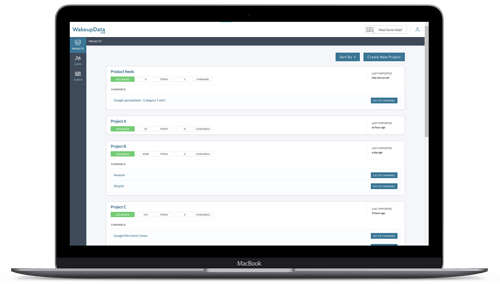E-Commerce Pricing Strategies: Avoiding Common Pitfalls
Posted on June 20, 2024 (Last Updated: June 24, 2024)
When it comes to e-commerce, price is King. Just from our own personal experiences of shopping online, we’re all susceptible to discounts and are comfortable searching out the best prices using various price comparison sites - and the research backs this up. But how to define the prices of your own products? Let's take a look.
Understanding Costs
To price your products effectively, it’s essential to comprehend all associated costs - back to Management Accounting classes ha-ha. These include fixed costs such as website hosting, salaries, and rent, as well as variable costs like shipping and packaging.
Consider a business that sells handmade candles. The production cost per candle, covering raw materials, labuor, and overheads, is $10. Listing the candle at $12 might seem profitable, but if additional costs like shipping and marketing push the total expense to $15, each sale results in a $3 loss instead of a $2 profit. Therefore, accounting for all costs ensures that your pricing strategy covers expenses and avoids financial losses.
-3.png?width=728&height=410&name=Article%20Banners%20(7)-3.png)
Knowing Your Customers
Understanding your customers' spending habits and their perception of value is key. A survey by Bain & Company revealed that even customers who consider a brand high quality still focus on price before purchasing. Gathering insights through surveys, feedback, and purchase history can help set a price that aligns with customer expectations, ensuring they see value in your products.

Did you know we have a ton of educational content available for free? You can strengthen your omnichannel efforts by utilising the power of Local Inventory Ads, making a seamless connection between local physical stores and online.
Monitoring the Competition
Keeping an eye on competitors' pricing provides invaluable insights. Pricing your products significantly higher than similar offerings can deter potential customers, while underpricing may cut into your profits. For example, if you sell a smartphone with features similar to an iPhone priced at $799, listing your phone at $899 could drive customers to the cheaper iPhone.
Using tools like ours can help monitor competitor prices in real-time, allowing you to adjust your prices dynamically and remain competitive.

Embracing Dynamic Pricing
Dynamic pricing, adjusting prices based on demand, time, and other factors, can significantly enhance profitability. Amazon exemplifies this strategy by changing prices approximately every 10 minutes. This responsiveness helps Amazon stay competitive and capitalize on market fluctuations. Implementing dynamic pricing allows businesses to optimize profits during peak demand periods and maintain steady sales during off-peak times.
Offering Bundles and Discounts
Creating product bundles and offering time-limited discounts can attract price-sensitive customers. For instance, bundling a $1,200 laptop with a printer and bag for $1,300 increases the perceived value, encouraging customers to spend more.
Avoiding the "One Price Fits All" Approach
A single pricing strategy is rarely effective. With consumers comparing prices online, especially through platforms like Google Shopping, it's crucial to adapt prices based on various factors such as stock levels, competitor pricing, and delivery charges. A nuanced pricing approach that adjusts based on these variables ensures your products remain competitive.
Ensuring Competitive Yet Profitable Pricing
While being the price leader is tempting, underpricing can erode your profits. Regularly monitoring the market can help you avoid setting prices too low. If a competitor raises their prices or goes out of stock, you could miss out on potential revenue by maintaining an unnecessarily low price.

Addressing Delivery Charges
High delivery charges are a major reason for shopping cart abandonment. Offering free delivery, while challenging, can significantly reduce abandonment rates. Research by Global Web Index shows that free delivery is a top reason for online shopping. Balancing product pricing to absorb delivery costs can enhance customer satisfaction and conversion rates.
Continuous Testing and Iteration
A pricing strategy is not static, it requires continuous testing and adjustment. Regularly reviewing and tweaking your pricing strategy in response to market trends, customer feedback, and competitive actions ensures it remains effective.
Precision in Pricing
Accurate pricing in e-commerce goes beyond covering costs. It requires a deep understanding of your customers, competitors, and market dynamics. By integrating comprehensive cost analysis, customer insights, competitive monitoring, dynamic pricing, and continuous iteration, you can avoid common pricing mistakes and drive your e-commerce business towards success.
Implementing these strategies not only helps in avoiding pricing pitfalls but also in optimizing your pricing for maximum profitability and customer satisfaction.
There are many ways in which Product Feed Management tools can add value to product feeds for digital marketers and online store owners. For example, consider A/B testing all essential elements of your product feed for even better results
For more info, you can check out our resources section, where we outline Client Cases, more explanatory videos and e-book downloads.
Talk to us today if you have any questions, or get your free, 14-day trial via the link below.





